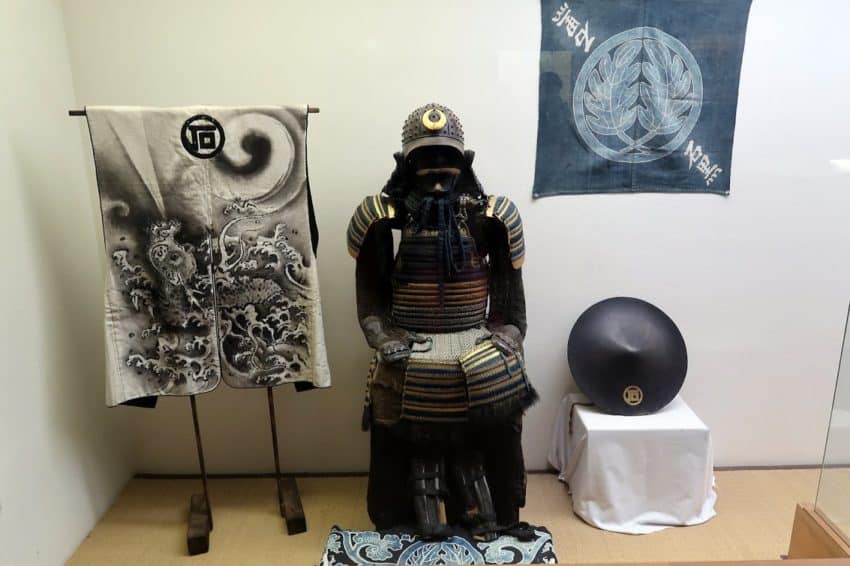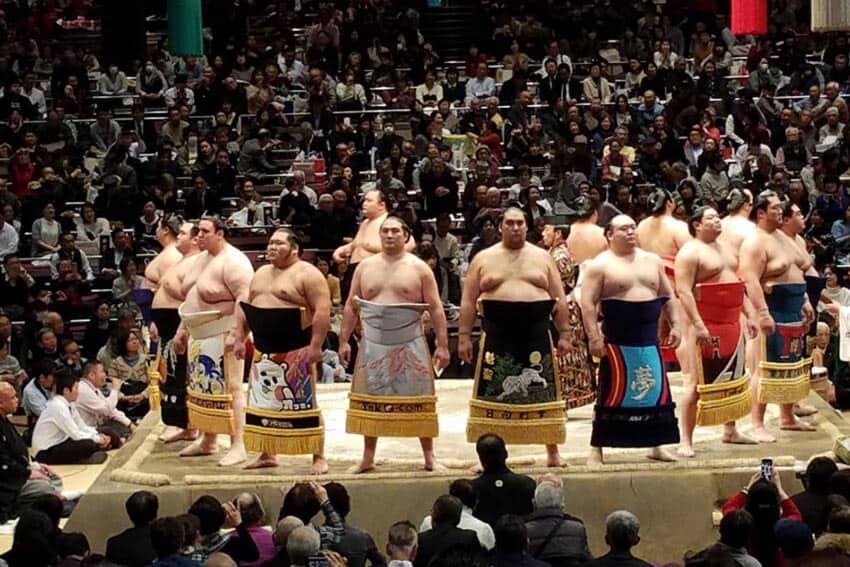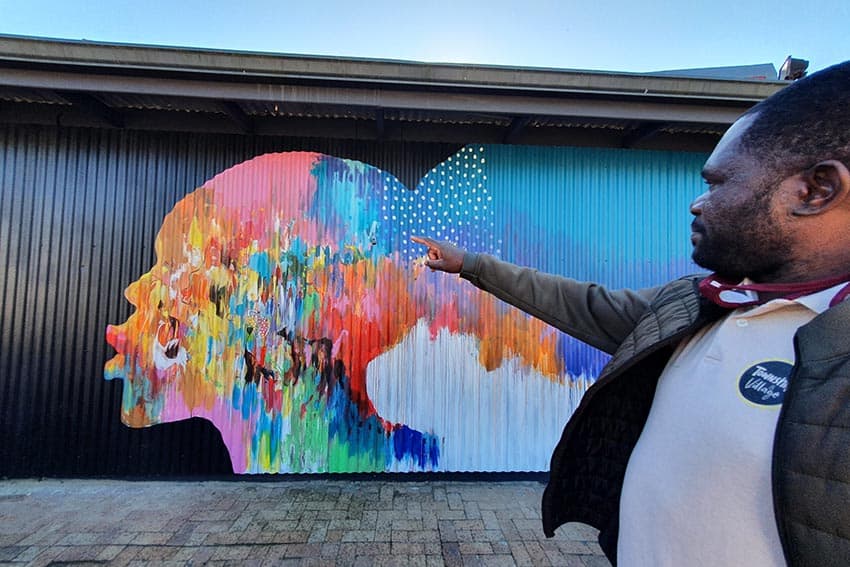By John Penisten

[Note: Despite the severe damage and ongoing recovery from the devastating earthquake and tsunami in March, 2011, in the northeast of Honshu Island, the rest of Japan remains open to visitors and there is much to see and experience throughout Japan.]
One of the most meaningful travel experiences in Japan’s tradition-rich culture is a visit to some of its numerous historic temples and religious shrines. And one of the best places to do this is the old imperial capital of Kyoto where some of the country’s most magnificent and majestic temples and shrines are located.
Kyoto’s Heritage
Situated in the south-central area of Honshu Island, Kyoto is a vibrant modern city imbued with an air of ancient Japanese culture. Kyoto’s colorful heritage is easily seen in the many temples and shrines that capture the city’s past.
The following are among the more popular and significant of Kyoto’s temples. Many of the temples and shrines are open free to the public, but some do charge nominal admission fees, usually about US$5 per person.
Cloud Dragon
Located in the Sagano district of Kyoto, Tenryu-ji Temple (Temple of the Heavenly Dragon) has a long history and its landscaped garden is a designated United Nations World Cultural Heritage site. The Sogenchi Garden is one of Japan’s oldest.
The temple was established in 1339 and has undergone several reconstructions. The present buildings date to the Meiji period of 1868-1912.
However, the site was originally occupied by the first Zen temple in Japan dating back to the ninth century. Be sure to take in the magnificent ceiling painting of the “Cloud Dragon” in the Dharma Hall.
Zen Rocks
Ryoanji Temple (Temple of the Peaceful Dragon) was established in 1473 in the Ryoanji area of Kyoto. This Zen temple is most famous for its rectangular (100 ft. x 33 ft.) rock garden created in the 16th. Century.
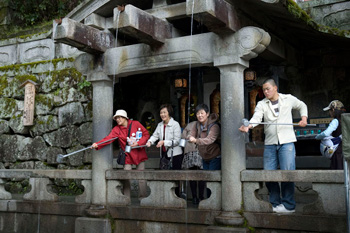
The garden is composed of 15 rocks set into a field of raked white gravel and is considered a masterpiece of Japanese culture. Foot paths lead throughout the temple grounds and around the Kyoyochi Pond providing varied views of the beautiful gardens and temple grounds
Pure Waters
Kiyomizudera Temple is located in the Higashiyama district of Kyoto. Known as the “Clear Water Temple,” it was founded in the 8th. Century by a Buddhist priest. The temple buildings are spread over a steep hillside offering panoramic views of the Kyoto metro area.
Most of the present buildings and towering pagoda were constructed in the early 17th. Century. Visitors seek out the temple waterfall for its pure water, said to have curative powers for all illnesses.
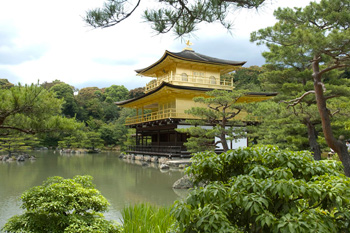
Paneled Paintings
Daikakuji Temple was originally a palace of the Emperor Saga during the 9th. Century. It was later converted to a Shingon Buddhist Temple.
The temple buildings are noted for their exquisite traditional sliding door and paneled paintings depicting scenes of early Japan.
Fronting the main building is an imperial court-styled garden flanked with orange and plum trees. The grounds are beautifully landscaped with Osawa Pond adding to the serene atmosphere. Daikukuji Temple is in the Sagano area of Kyoto city.
Golden Pavilion
Located in Kyoto’s Kita-ku district, the Kinkakuji Temple boasts the famed Golden Pavilion. The World Cultural Heritage site features meandering pathways through extensive gardens and landscaped grounds. The temple dates from the 1300’s but the elegant Golden Pavilion is the only original building.

The handsome three-level pagoda tower is covered with gold-leaf on lacquer, providing a shining reflection over the tranquil waters of Kyoko-chi Pond. The Golden Pavilion is one of Kyoto’s major attractions.
Torii Tunnels
Fushimi Inari Taisha Shrine in Kyoto’s suburban Fushimi-ku district is a large temple complex spread over a wooded hillside. This large Shinto shrine complex is one of Japan’s most important.
Pathways through wooded slopes pass through tunnels of bright red-orange torii gateways, the temple’s most noted feature.
There are numerous small shrines devoted to various deities. Many locals come here to pray, make offerings, and ask for the blessings of the gods for the success of business endeavors.
Big Buddha

Todai-ji Temple is located in Nara, an hour’s train ride southeast of Kyoto. This temple complex dates from the 8th. Century. Due to wars, fires and natural disasters over the years, many of the current buildings date from the 16th. and 17th. Centuries.
The Hall of the Great Buddha rates as one of the world’s largest wooden structures. It measures 187 ft. wide by 164 ft. deep and 157 ft. high. It had to be big in order to house the magnificent bronze statue of the Vairocana Buddha, the largest bronze statue in the world at 53 ft. high and weighing 550 tons.
Kyoto, the ancient imperial capital of Japan doesn’t disappoint. Thoroughly modern in every way, the city reflects the fast-paced urban environment of today’s Japan. And yet Kyoto retains its reputation as a treasure trove of Japanese culture and heritage with its magnificent temples and shrines.
Further Information about Kyoto:
Kyoto boasts numerous hotels and lodging options for all budgets. One option is the well-maintained New Miyako Hotel
17 Nishikujo-Inmachi, Minami-ku,
Kyoto 601-8412
The hotel is conveniently located across the street from the main Kyoto train station, providing easy access to all of Kyoto’s attractions.
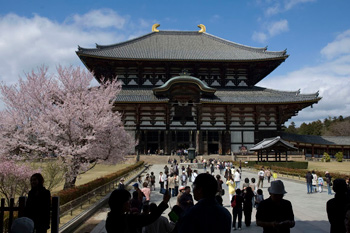
Another more expensive option is the
Hotel Granvia Kyoto
Karasuma Chuo-guchi, Shiokoji-sagaru
Karasumadori, Shimogyo-ku
Kyoto 600-8216
This first-class hotel is part of the JR Rail Company chain and is located atop the KR Kyoto Station. The train station has numerous shops and restaurants as well.
For detailed information on travel to Japan and in Kyoto, see the Japan National Tourism Organization site.
If you have limited time in Kyoto and want to see as many temples and shrines as possible, consider hiring a private English-speaking taxi guide for one day rather than to rely on busses, subways, etc. to get around.
This option makes it easy to take in several of Kyoto’s major temples and shrines quickly and comfortably and with excellent English narration on Kyoto’s culture and history.
Doi Taxi, Kyoto,
Email
Telephone: 81-(0)90-9596-5546
Operated by Mr. Naoki Doi, expert English-speaking guide to Kyoto who ensures a pleasant experience. A comfortable six-passenger van is used for the tours. Doi Taxi is highly recommended.

Based in Hilo, Hawaii, John Penisten covers varied travel subjects in the Asia/Pacific Rim region and beyond for different outlets. Visit his website, pacpics.com.
Read John Penisten’s article: Hot Springs and Cherry Blossoms: Experiencing Japan’s Cultural Icons
- Saudi Arabia Might Be Your Next Getaway Spot - April 23, 2024
- Mongolia, the Land of Eternal Blue Sky - April 20, 2024
- These 9 U.S. National Parks Require Reservations in 2024 - April 17, 2024



